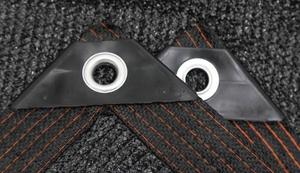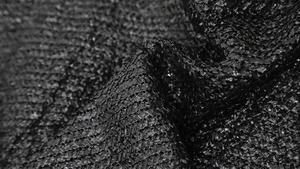(928 products available)




















































































































































































































Cattle shade netting is artificial cover for cattle. Its purpose is to protect the animals from too much sun. There are different kinds of cattle shade nettings.
HDPE Shade Netting
This netting is made from high-density polyethylene. It is tough and can withstand the weather for a long time. This netting is also good at blocking UV rays. It also allows wind to pass through. This cattle netting is suitable for hot areas.
Polypropylene Shade Netting
This netting is made from lightweight and flexible material. It is less costly than other nettings. It is suitable for farmers with little money. It is suitable for temporary use. It has low UV protection.
Knitted Shade Cloth
This netting is made with a machine. It makes a strong and even netting. This netting is good for airflow and visibility. It is suitable for both permanent and temporary setups.
Woven Shade Cloth
This netting is made by weaving threads together. It is thick and strong. It can last a long time. It is good for permanent barns. It blocks wind and dust.
Shade Sail
This netting looks like a sail. It is made from strong fabric. It is stretched between posts or frames. It is good for big areas. It is also good at blocking UV rays.
Removable Shade Panels
These are panels that can be put on and taken off easily. They are put on existing barns or sheds. They are good for controlling the amount of sun that goes into the barn. They can be removed when not in use.
Fixed Shade Structures
These are permanent buildings. They are built to hold shade nets. They come in different designs. Some have arches. Some have domes. Some have canopies. They cannot be moved easily.
Green Shade Netting
This netting has a green color. It is made from HDPE. It is good for growing plants in a controlled way. It blocks some UV rays. It also reduces wind damage.
Black Shade Netting
This netting is black. It is usually used for cattle. It absorbs and blocks heat and light well. It also reduces the amount of light that reaches the animals.
High Density Polyethylene (HDPE)
HDPE is a popular material for shade nets due to its strength and durability. It can withstand harsh weather conditions and is resistant to UV rays, making it suitable for long-term use. HDPE shade nets are breathable and provide good visibility, allowing for air circulation and light penetration. They come in different shades and can be customized to fit specific needs.
Knitted Design
Cattle shade netting has a knitted design that offers flexibility and strength. The netting can stretch without breaking, making it ideal for withstanding wind and other environmental factors. The knitted design is also easy to install and can be cut to size without fraying.
UV Protection
One of the essential aspects of cattle shade netting is its UV protection. The netting blocks harmful UV rays from the sun, protecting cattle from sunburn and skin cancer. Shade nets come with different levels of UV protection, indicated by percentages. Shade nets with 90% UV protection are ideal for areas with intense sunlight.
Color Options
Cattle shade netting comes in various color options, each serving a different purpose. For example, green and black are popular colors for agricultural nets as they blend with the environment. White nets reflect heat and cool the shaded area, while dark-colored nets absorb heat and can raise the temperature of the shaded area.
Fire Retardant
Some cattle shade nettings are made with fire retardant material, making them ideal for areas with high fire risk. These nets reduce the spread of fire and provide an extra safety layer for cattle.
Cattle shade netting serves multiple purposes and is a valuable asset in different scenarios, as follows.
Livestock farms
The primary use of shade nets is in commercial livestock farms. Farmers use these nets to create shaded areas for their animals. Large herds often need more shade, which is why farmers build complete structures and use nets to cover them. Farmers can also take the nets down when it is not needed. The netting protects cattle from the sun, keeps them cool, and reduces heat stress. It can also help lower feed costs and increase milk and meat production.
Beef cattle ranches
Beef cattle ranchers often let their animals graze in open pastures. However, the ranchers still need to ensure shade for the cattle. Some ranchers use portable shade structures or shade trees using cattle shade netting. The netting protects the cattle from the harmful effects of direct sunlight. It also helps them stay healthy and grow big enough for slaughter.
Dairy farms
Dairy farmers need to use shade netting to protect their dairy cattle. Shade nets can cover milking barns or outdoor pens. The netting keeps the cows cool and comfortable, improving milk production. Shade netting is also vital for calf pens and heifer pastures. It ensures young cattle stay healthy and develop well.
Equestrian facilities
Horse farms or stables are known as equestrian facilities. These farms often hold horse shows, competitions, or training sessions. Equestrian facilities can use shade netting to make shaded spots in barns or around riding areas. The netting keeps horses cool and comfortable during workouts or events. It also protects horses from sunburn and helps them to perform well.
Veterinary clinics and animal shelters
Animal clinics and shelters may also use cattle shade netting. These institutions use the netting to create shaded areas in outdoor pens or play zones. The netting keeps animals cool and comfortable in the shade. It is also vital for animals under stress or with health issues. The netting can help reduce heat stress in the shelter. It also aids in the recovery of animals in the veterinary clinic.
Material Quality:
Opt for a durable shade net made from high-density polyethylene (HDPE) material. HDPE nets are known for their strength, UV resistance, and ability to withstand harsh weather conditions. Ensure that the net has good ventilation properties to allow air circulation while providing shade.
UV Protection:
Choose a cattle shade netting that provides excellent UV protection. Cattle are vulnerable to sunburn and skin-related issues due to prolonged sun exposure. A net with a high UV protection factor (UPF) will safeguard the cattle from harmful UV rays, reducing the risk of health problems.
Wind Resistance:
Select a shade net that can withstand windy conditions, especially if the farm is located in an area with frequent winds. The net should be resilient and have the ability to prevent wind damage. Look for features such as reinforced edges and secure attachment methods that ensure the net stays in place during windy weather.
Water Resistance:
Adequate water resistance is another important consideration when purchasing cattle shade netting. This ensures that the net will remain functional in wet weather conditions, preventing water from pooling on the net and reducing the risk of mold or mildew growth. Look for nets with water-repellent coatings or water-resistant properties.
Durability and Longevity:
Check the product specifications and descriptions for information about the net's durability and expected lifespan. Shade nets with double-stitched seams, reinforced edges, and high-quality materials are generally more durable and long-lasting. Investing in a durable net will reduce the need for frequent replacements and provide long-term cost savings.
Easy Installation and Maintenance:
Consider the ease of installing and maintaining the shade net. Look for nets that come with clear installation instructions and all necessary accessories for easy setup. Additionally, nets that require minimal maintenance are more convenient and cost-effective in the long run. Ensure the net can be easily cleaned and stored when not in use.
Size and Coverage:
Determine the appropriate size and coverage of the shade net for the desired shaded area. Measure the dimensions of the cattle shelter or grazing area to ensure the net will provide adequate shade without leaving any gaps. Consider nets that can be easily expanded or adjusted to accommodate changing shade requirements.
Cost Considerations:
While considering the above factors, also consider the cost of the cattle shade netting. Compare prices from different suppliers, but do not compromise on quality for the sake of a lower price. Remember, a net that is too cheap may have poor quality and require frequent replacements, resulting in higher long-term costs.
Q1: What are the benefits of using a cattle shade netting?
A1: Cattle shading netting is used to provide shade for cattle. It helps keep cattle cool. It also reduces the chances of heat stress. It can protect the cattle from the sun, rain, and wind.
Q2: How can buyers install a cattle shade netting?
A2: A cattle shade netting is easy to install. It can be hung from existing structures or supported by a frame. Buyers can attach the netting using zip ties, clips, or ropes. They should secure the netting properly and ensure it is taut. They should also consider adding weights or anchors along the bottom edge to keep it in place.
Q3: How can users maintain the cattle shade netting?
A3: The netting should be cleaned regularly to remove dirt and debris. It should be inspected for damage and reinforced or repaired as needed. Nets may need to be replaced every few years to maintain their effectiveness and appearance.